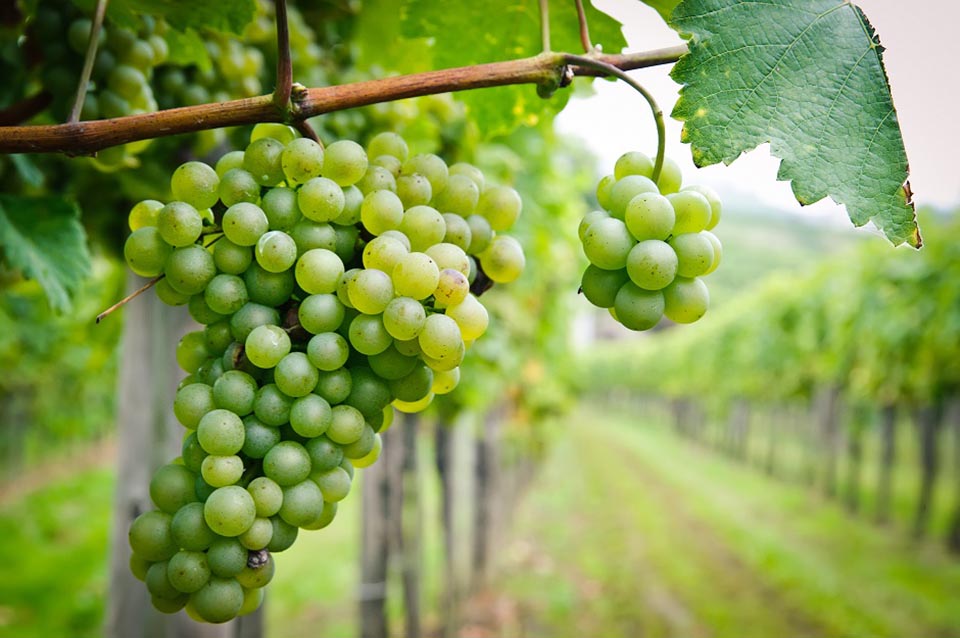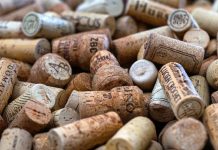
I wonder whether you’ve come across the expression “noble grapes” before. It sounds slightly old-fashioned perhaps because few people talk about noble grapes these days. Even so, they are the grapes that have become international names. While some of the noble grapes are grown in many countries, others need specific conditions – the right soil, climate and environment (collectively known as terroir) for them to develop successfully and produce fine wine. And of course, fine wine doesn’t happen by chance; it requires the experience of years: the skills of both the farmer and the wine-maker. There are only six varieties that are considered “noble” so they are not difficult to remember.
A survey conducted some years ago in the wine section of a well-known British supermarket revealed an astonishing fact. A significant number of the customers who were buying wine couldn’t name a single grape variety. It seems difficult to believe, especially when many bottles of wine – especially those of the New World – show the name of the grape on the label. If you cannot manage to come up the names of grape varietals, then clearly you are not alone. There are thousands of others, walking among us.
So can you tell me the names of the six “noble” grapes? No, I thought not. Incidentally, there are six “noble gases too,” but unless you are a physicist you probably don’t know what they are either. There are three red grapes and three white grapes that quality for the honour. The reds are Cabernet Sauvignon, Merlot and Pinot Noir. The whites are Riesling, Sauvignon Blanc and Chardonnay. Now write those down and don’t forget them, because there will a test next week.
It’s generally agreed that with some notable exceptions, the finest Cabernet Sauvignon comes from the Bordeaux region of France and so does the finest Merlot, a grape used almost exclusively in the highly sought-after and astronomically expensive Château Petrus. If you want to taste the best Pinot Noir, you’ll have to look to France again and the region of Burgundy which makes some of the finest Pinot Noir in the world. It’s the only red grape permitted in the region.
Chardonnay makes the fascinating and complex white wines of Burgundy and also is used to make Champagne. We don’t see Riesling all that often in Asia, but on the banks of the Rhine and Mosel Rivers in Germany the grape is crafted into incredibly dry and razor-sharp wines that are considered the grape’s finest expression. The green Sauvignon Blanc is the star player in the Loire Valley of France and also plays an important supporting role in Bordeaux. In recent years, they’ve been making remarkably good Sauvignon Blanc in New Zealand where the climate brings out the characteristic sharp acidity of the grape.
You might be wondering about all the other grapes – those that are not considered “noble”. There are around 5,000 varieties of wine grapes all together, though only about 150 are planted in significant commercial quantities. They may not have the honorific “noble” yet many of them produce superb wine given the right conditions. One of these is the green Chenin Blanc grape, which is pronounced s bit like “shen-ang blong” and thought to have originated in France’s Loire Valley sometime during the ninth century. In that region it’s also known as the Pineau de la Loire among other names. Today it’s grown all over the world especially in South Africa and more recently in California and its high acidity makes it ideal for producing sparkling wines. The classic Chenin Blanc of the Loire is an extremely dry, slightly acidic yet fruity wine which brings fresh flavour of quince and apples. In warm years, the grapes are left on the vines to produce an intense, honeyed and oily dessert wine.
Rhanleigh Chenin Blanc 2020 (white), South Africa (Bt 459 + tax @ Vines to Vino)
Chenin Blanc is the most widely planted grape variety in South Africa where it’s historically known as Steen. It was probably the first variety ever to be planted in the region around 1655. Rhanleigh Winery (it’s named after a race-horse) is in the hilly Western Cape Province, between the towns of Robertson and Ashton. Their Chenin Blanc is a pale gold fading to transparent at the edges of the glass – the usual sign of a young wine. The liquid has a pleasing oily appearance and a distinct greenish tinge.
 Yeasty aromas emerged on opening, followed by attractive sweet pineapple, pomelo and dusty herbs. I don’t know whether you can imagine the smell of dusty herbs, but it’s more pleasant than it sounds. The wine reminds me slightly of a Chardonnay but without the usual buttery overtones. At 13% ABV, it’s a dry, light-bodied wine with an unmistakable sharpness of bright acidity which is fairly typical of this grape variety. It has a reasonably long sharp citrusy finish too. I have to admit that this is a fairly basic wine, but if you enjoy lively, racy whites, this summer-style wine would probably make a good partner for creamy chicken or fish dishes. And at this price, it’s a real bargain too.
Yeasty aromas emerged on opening, followed by attractive sweet pineapple, pomelo and dusty herbs. I don’t know whether you can imagine the smell of dusty herbs, but it’s more pleasant than it sounds. The wine reminds me slightly of a Chardonnay but without the usual buttery overtones. At 13% ABV, it’s a dry, light-bodied wine with an unmistakable sharpness of bright acidity which is fairly typical of this grape variety. It has a reasonably long sharp citrusy finish too. I have to admit that this is a fairly basic wine, but if you enjoy lively, racy whites, this summer-style wine would probably make a good partner for creamy chicken or fish dishes. And at this price, it’s a real bargain too.
 |
 |
 |





